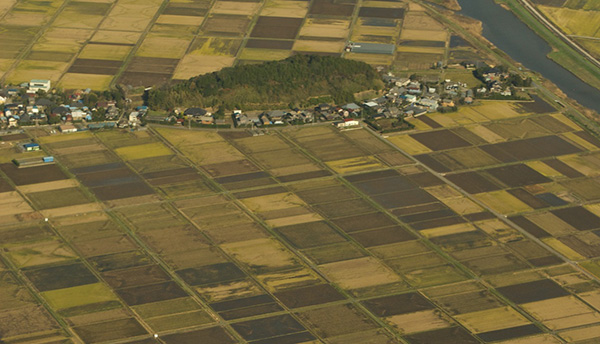
A couple of months ago, I was talking with a friend about design. Well, really, about the scope of design. Many designers tend to think in terms of discrete objects—a chair, a phone, a building. This exasperated him, and for good reason. See, discrete objects aren’t the only things that are designed. Cities are, too, he argued. “You see that city over there,” he said, emphasizing his point. “People made that.”
If we were to pick up this conversation again—and we might—I’d add landscapes to the list. Our understanding of ecology has matured to the point that we are beginning to grasp our species impact on the planet. We are, and have been for thousands of years, changing our surroundings to suit our needs. Today, there isn’t a single ecosystem that’s untouched by humanity. That’s a definition of design if I’ve ever heard one.
But in many ways, we’ve been molding ecosystems haphazardly, at best. If design isn’t just the result of human activities, but is a considered plan put together with purpose and intent, then maybe we’re not designing landscapes after all.
Both sides of the argument are equally valid, I think. But one thing is clear—when we change our surroundings, we need to place more emphasis on design. A couple of recent papers have made that clear to me.
In one, Joan Nassauer and Paul Opdam wrote an op-ed of sorts in the influential journal Landscape Ecology back in 2008. Nassauer and Opdam suggested that the field of landscape ecology add design as a third tenet to the existing two, pattern and process. It would help address a shortcoming of the field. Landscape ecology was originally formulated based on the premise that we can learn how a landscape functions by studying how it is configured. If we get pattern, then we’ll get process. It’s been a phenomenally successful framework, but like many sciences, landscape ecology has stumbled when it comes to the implementation part.
That’s problematic because we humans are always mucking about with the landscape. Every time we repave a road, carve out a new subdivision, or erect a skyscraper, we’re altering the face of the Earth. And currently, we’re doing it in perhaps the most uncoordinated way possible. When set out to build a road, skyscraper, or city, our ambitions may be big, but our thinking is small. We tend to focus on the immediate impacts—how much steel we’ll need, how much land we’ll use up, and so on. We forget to consider how that creation will affect the surrounding landscape.
There are a few exceptions. Nassauer and Opdam cite two case studies, an ecological corridor network in Denmark and a watershed workshop in Iowa. Another paper by Simon Swaffield referred to an overhaul of the wetlands and waterways in and around Christchurch, New Zealand. There are others, too. When I was in graduate school, members of my lab were working on the Sierra Nevada Adaptive Management Project. The U.S. Forest Service was working with scientists and locals to come up with a way to minimize potentially catastrophic wildfires. The centerpiece of the Forest Service’s original plan was to clearcut a giant checkerboard of chevrons into 11 national forests. It’s design on a landscape scale if I’ve ever seen it. Their process is, too. Though the Forest Service wasn’t keen on the idea initially, they now are working closely with locals to ensure the final implementation is palatable to everyone. Researchers from the University of California are serving as arbiters, of sorts, making sure the science is sound and that everyone’s voice is heard. The back and forth, the multiple stages, the consideration of possible outcomes—that’s the design process.
If landscape ecology can successfully incorporate design as a third tenet, it will be in a league of it’s own. It’s a science that thinks on a system-wide scale; few such sciences worry about design. There are other systems that have design applied to them—cities are certainly one—but those design processes aren’t always informed by the sort of systems science that’s inherent to landscape ecology. The field could be a real pioneer, and in the process provide some order to slapdash overhaul we’re currently giving our surroundings.
Sources:
Nassauer, J.I. & Opdam, P. (2008). Design in science: extending the landscape ecology paradigm, Landscape Ecology, 23 (6) 644. DOI: 10.1007/s10980-008-9226-7
Swaffield, S. Empowering landscape ecology-connecting science to governance through design values, Landscape Ecology, DOI: 10.1007/s10980-012-9765-9
Photo by Tim De Chant.
Related posts:
Creativity—the disturbance that distinguishes urban ecosystems